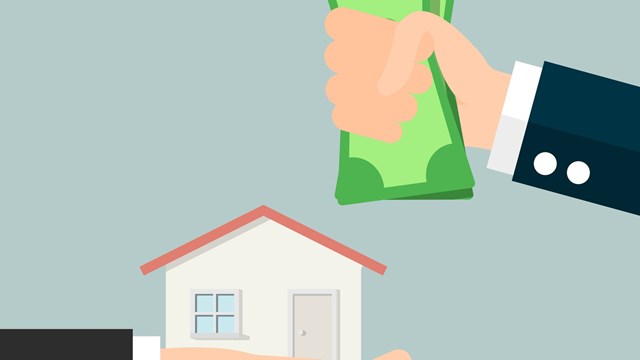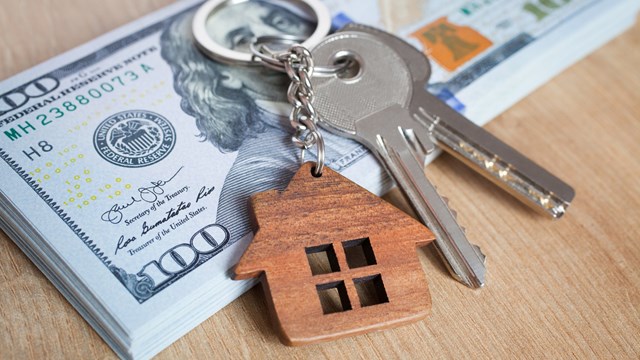At long last, the good news is here: New York real estate prices are on the rise. Every major real
estate brokerage firm in the city reports that across-the-board prices rose from 1993 to 1994. Although there are areas that remain flat or even took a small dip, the bulk of the market improved last year.
In response to a strengthening economy and a tightening rental market, more buyers are entering the market for the first time, while families already in co-ops and condos are trading up to larger apartments. Even studios and one-bedrooms, which saw a severe glut in the last several years, are being absorbed into the marketplace and have experienced price increases.
The market is very, very stable, says Alan Rogers, managing director of Douglas Elliman. We've gone back to basics, with real estate as a long-term, non-speculative investment. People view apartments as a home, and families are staying five years or more. It's a much healthier market.
Janet Gifford, senior vice president at The Prudential MLBKaye International Realty and manager of their West Side office, says, '94 was definitely better than '93. There is very little product, indicating that prices will continue to rise. The one-bedroom market did well for the first time in a long time; we're selling one a week now, whereas for a while, brokers didn't want to handle them at all. Today, she says, good one-bedrooms with views of Central Park or the river command well into the $300,000's. And while a classic six could be had two years ago in the $400,000 range, they are now selling in the $500,000 to $600,000 range.
Gifford also sees more families staying in the city, and more people coming back into the real estate brokerage businessboth good signs of an improving market. She also points to the rising rental market as an indicator of strong future sales.
1994 was a very good year right across the board, says Peter Marra, president of the William B. May Company. All the firms did very nicely.
And Clark Halstead, founder of the Halstead Property Co., concurs: 1994 was the year the co-op and condo market made its comeback. We're at price levels for virtually all categories of property that haven't been seen since 1989, for the most part. Smaller apartments and this means entry-level apartments have started to experience real demand for the first time since the recession. It may be because entry level jobs are once again findable in Manhattan.
Indeed, unemployment in the city has dropped from 10.2% in 1993 to 8.7% in 1994, with December's figure at 6.6%. According to Jim Brown, labor analyst with the New York State Department of Labor, the city had an overall job gain of .05% in 1994. This reflects a gain of 34,000 jobs in the private sector (a 1.3% increase) offset by a job loss of 17,000 in the public sector as city and state budgets continue to be slashed. Brown points out that much of the '94 gain was in the securities industry, an area which is now slowing down and actually making lay-offs. But he adds that the retail business is improving, with a number of national chains coming into New York. The construction industry is also finally recovering after a very big decline in the 1980s, he says.
Development is Back
The news for overall real estate investment is good, too, with ffb the Attorney General's office seeing an increase in co-op and condo conversion submissions for the first time since 1986, according to Gary Connor, Chief of the Attorney General's Real Estate Financing Bureau. In 1993, accepted plans included 13,784 units in 163 properties, while last year, 38,126 units in 219 properties were accepted for conversion in the state of New York.
I think '93 was the bottom, says Connor, although we see trends a little later than everyone else. But it looks as though the market is turning around.
Connor has also seen an increase in the number of real estate syndications filed, indicating new growth in real estate investment.
Real estate developers are also showing signs of optimism for the first time in nearly a decade, manifest by a number of new buildings now on the drawing board or under construction. At 1965 Broadway in the heart of the Lincoln Center district, Millennium Partners is just completing a 325-unit high-rise condominium and expects to open the sales office this summer. Ian Bruce Eichner, developer of Cityspire, is ready to begin building a 128-unit condominium at 201 East 80th Street. And Donald Trump, in a joint venture with General Electric and the Galbreath Company, will begin renovating the Gulf & Western Building in Columbus Circle this spring for conversion into a combination hotel and 166-unit condominium. The Jack Parker Organization has begun construction of an 82-unit condo tower at 306 East 72nd Street. The list goes on, including condos, rental buildings and commercial projectsall in a market that has been extraordinarily quiet for the past five years.
According to Douglas Elliman's Manhattan Market Report, which compares prices from 1989 to the present based on the sale of more than 15,000 co-ops and 8,000 condo units from over 5,000 Manhattan buildings, co-op studio prices rose 8.89% in 1994, while one-bedroom co-ops rose 6.47% and two-bedrooms .89%. In the condo market, the survey shows overall prices about level with last year, with only one-bedroom condos actually rising in price.
The Marketing Directors reports both volume and price up in nearly every category, with a small decrease in price in two-bedroom units, while William B. May reports that the volume in two-bedrooms was up 100% from 1993 to 1994 and 65% in one-bedrooms. The Corcoran Group reports an overall per room price increase of 3.5%, with a very small drop in price in one-bedrooms, and an increase in every other size apartment (the Corcoran Report does not track studios).
What About Defaults?
Although defaults continue to plague the market, there have still been no more than three underlying foreclosures in the state of New York. Connor acknowledges that there are still new sponsor defaults coming in, but they can take years to resolve. There were probably about the same number of defaults in 1994 as in 1993, but less than in 1990 and 1991. That was the worst period; now it's just the odd building, he says.
At the Halstead Property Co., which has a special division just to handle foreclosure sales, We have seen brisk sales of foreclosure properties, says Michael Goldenberg, director of sales in the downtown office and director of REO operations (the banking name real estate ownedfor the foreclosure division). While the number of new foreclosures coming to the market was only marginally smaller in 1994 than in 1993, At the end of 1994, we started to see more of a decrease, and we anticipate fewer foreclosure properties in 1995, says Goldenberg.
Prospects for '95
According to Paulette Bonano, vice president of the National Cooperative Bank, We expect a strengthening of the market based on underwriting. We're very busy doing deals now.
The market has strengthened, a lot of bad deals have been fixed. It's a much healthier market now, she adds, explaining that lending institutions are willing to do more high-end and high-risk deals now because the economy is better and there is a secondary market for the mortgage securities.
There is very little ne ffb w product coming on the market, Rogers adds, predicting that with little new construction, condo prices will continue to rise steadily, at a rate of one to two percentage points over inflation for the next two years. He estimates that rental prices are up 10 to 15% over the past 18 to 24 months, pushing more people to buy, especially at the lower end of the market.
When it comes to 1995, I was concerned about interest rates and Wall Street, he admits. But my fears are not being realized; we are very busy. He says that pre-war co-ops of seven, eight and nine rooms or more are especially in demand, with no product available. Supply and demand indicates that prices will go up in '95, he predicts.
Although the new Republican Administration in Albany has been slashing the state budget, encouraging Mayor Giuliani to do the same in New York City, many real estate professionals believe that the cuts will be offset by an increasingly pro-business, pro-development attitude which seems to be encouraging real estate development and other business growth.
It's bound to be a bumpy transition, says Jim Brown, like the corporate restructuring that began in the early '90s. In the late '80s, there were under one million New Yorkers on public assistance, a number that reached 1.2 million in 1994. Cuts in welfare could send thousands of people back into the job market, raising unemployment once again. Or it could get more people into gainful employment, actually lowering the jobless rate, Brown points out.
But for the present, the feeling in the air is one of cautious optimism, and there is concrete evidence that faith in New York real estate is on the rise. As new buyers and families bring renewed confidence back to the co-op and condo market, and developers and other investors set their sights on new visions of grandeur, there seems to be little doubt that the trend is toward positive growth for New York's real estate market.
Ms. Chesler is Executive Editor of The New York Cooperator.






Leave a Comment